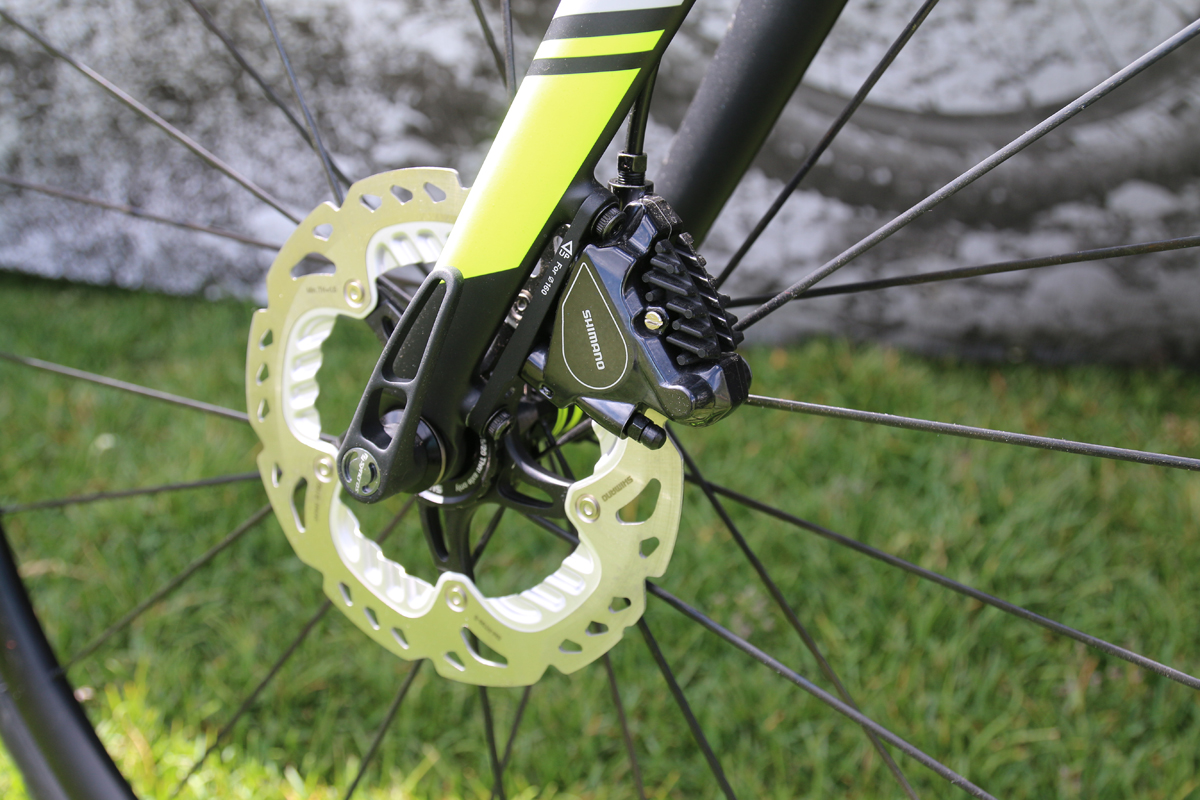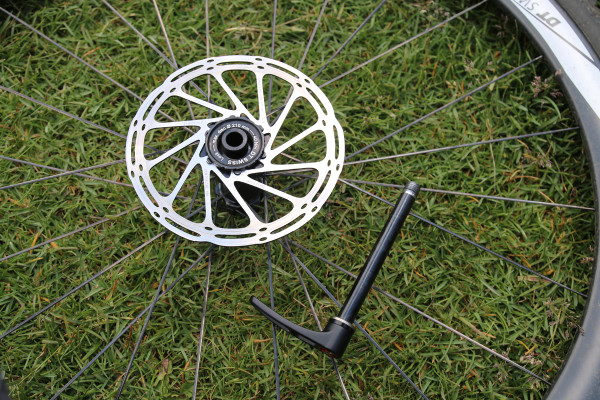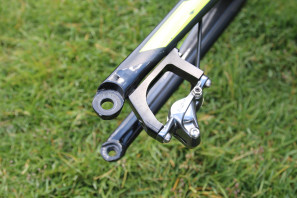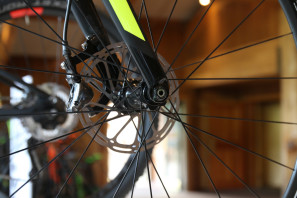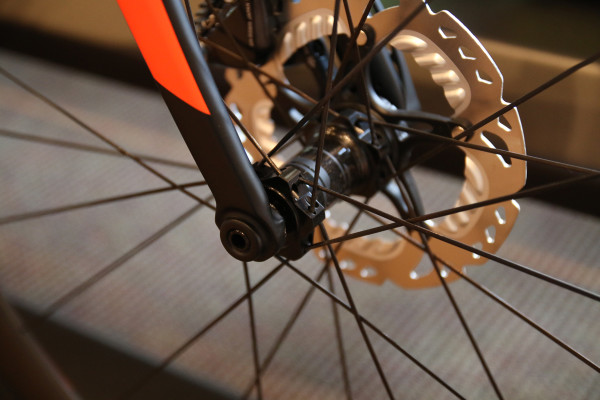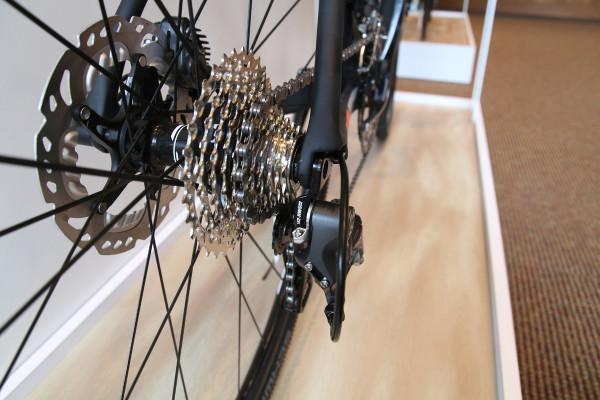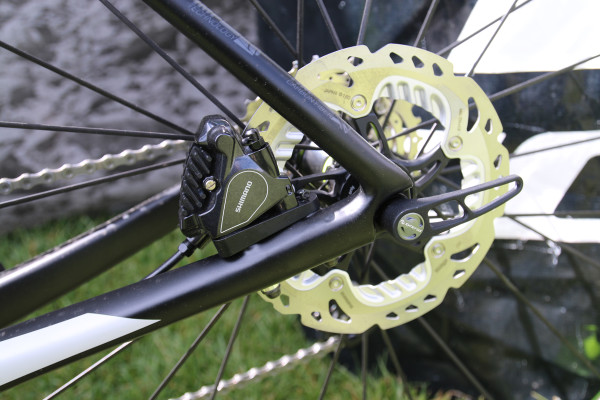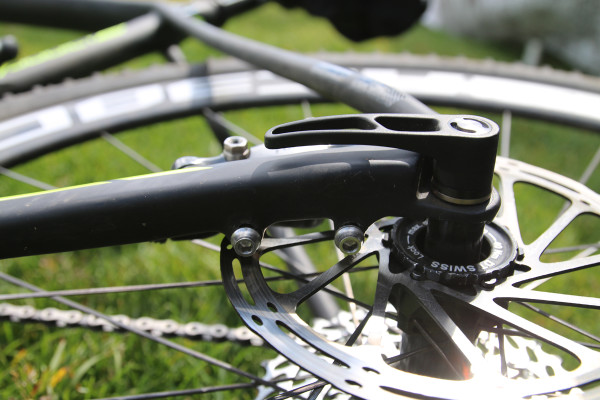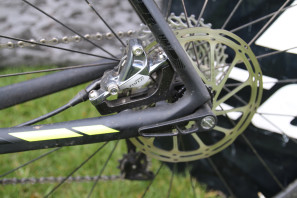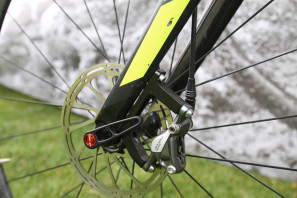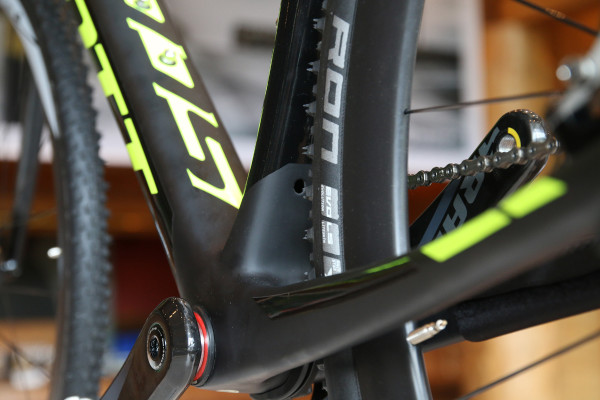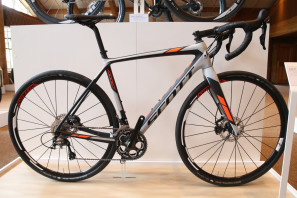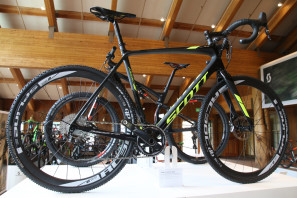A lot of new “standards” have popped up lately in terms of thru axles and road disc brakes which many manufacturers have been slow to adopt. On the other hand, Scott’s 2016 lineup of road, gravel, and cross bikes is a different story. Rather than have different standards on their bikes across the line, Scott is implementing all of the latest technologies which should make their bikes somewhat future proof. That is of course, unless the new “standards” fail to gain universal acceptance.
Truthfully, that shouldn’t be a problem as the flat mount brake mounts are backwards compatible, and we’re assuming that the thru axle sizes will become widely accepted fairly soon. And a road dropper post? By the looks of things, we can probably expect them sometime soon as well…
Once Chris King and Enve showed off their 12 mm front thru axles at NAHBS, we expected it was just the tip of the iceberg. After a few small manufacturers jumped on board, we’re starting to see 12mm road thru axles become common place for road, cross, and gravel bikes, but Scott is the first manufacturer we know of that is using them across the board.
All of Scott’s disc brake equipped road, cross, and gravel bikes will be running 12×100 front and 12×142 rear thru axles for 2016. For Scott this is more about safety than anything else. After having a number of testers install a quick release, Scott’s engineers found them to have wide variation in clamping forces meaning some were too loose and some were tight. Their testing with thru axles found the clamping forces to be much more consistent as well as offering better centering of the brake rotor.
We’ve been told by other companies that the smaller axles in the front are more appropriate for the forces associated with road bikes and will allow for lighter forks and potentially hubs – though more importantly a smaller axle would allow for the use of different bearings in the hub with larger balls for improved durability. However, for now most 15mm thru axle hubs can simply be converted to 12mm with different end caps. On Scott’s bikes, DT Swiss is providing the wheels and hubs.
Flat Mount is another new “standard” that has been met with confusion based on its compatibility. The new mounting system pioneered by Shimano allows for a tidier caliper at the rear of the bike and could potentially lead to the development of improved disc brakes for road. At the rear, the calipers bolt up from the bottom for easier access in tight frames, while the front bolts in from the back of the fork. Flat Mount frames are of course compatible with flat mount brakes, but they’re also compatible with all current road disc brakes with the right adapter.
Again, Scott has gone all in with flat mount and you will find it on all of their 2016 road, cross, and gravel models.
While we’ve seen a few road bike dropper posts at trade shows, they’re still mostly vaporware. However, when they become available Scott will be ready at least with their Addict CX bikes. Each frame has a small hole on the back of the seat tube that with a grommet installed is the wiring port for Di2. Without Di2 though, the port can be used for dropper post cable routing hinting towards the future.
